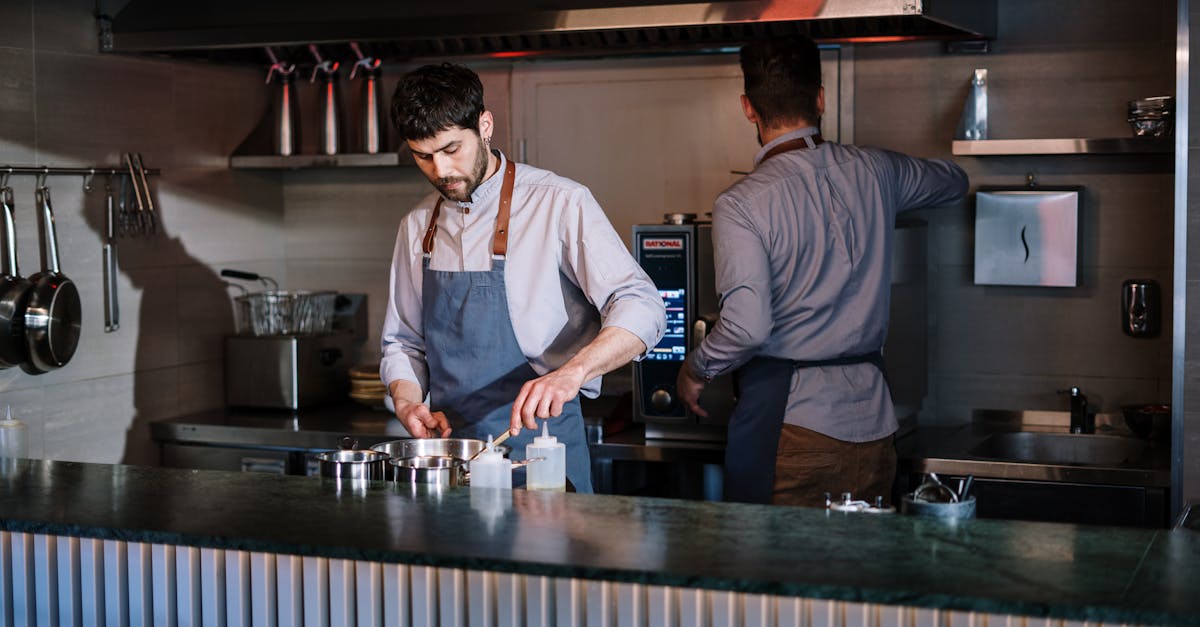
Introduction
The culinary world is undergoing a remarkable transformation, moving beyond traditional gastronomy to explore innovative dimensions. Driven by evolving consumer preferences and technological advancements, the industry is continually adapting and pushing boundaries. Chefs and food scientists collaborate to redefine dining experiences, focusing on flavor, presentation, and sustainability. The pandemic accelerated shifts in the sector, paving the way for creativity in home cooking and food delivery services. Meanwhile, the rise of food tech introduces new opportunities for growth and experimentation. This article delves into emerging trends that are shaping the future of gastronomy, inviting readers to explore a new era of culinary delights.
Technological Disruption in Kitchens
From robotic chefs to AI-driven recommendations, technology is transforming kitchens worldwide. Restaurants are adopting digital tools for efficiency, using smart appliances to automate cooking. Robots, like Flippy the burger-flipping robot, are assisting, ensuring consistency and reducing labor costs. AI analytics predict consumer trends and personalize menus based on customer preferences. Virtual reality (VR) and augmented reality (AR) enhance culinary training, offering immersive experiences. As technology becomes intertwined with gastronomy, it raises questions about preserving culinary traditions while embracing innovation.
Sustainable Gastronomy
Sustainability has emerged as a linchpin in the culinary sector, influencing ingredient sourcing and menu planning. Chefs are turning to local and seasonal produce, reducing carbon footprints. The movement for zero-waste kitchens emphasizes utilizing all parts of ingredients, from root to tip. Edible packaging solutions aim to minimize plastic waste, aligning with environmental consciousness. Circular gastronomy, which promotes closed-loop systems, is gaining traction. As consumers become more eco-aware, restaurants that prioritize sustainability stand out, appealing to ethically-conscious diners.
The Rise of Plant-Based Eating
Plant-based cuisine is no longer a niche; it's a thriving movement reshaping dining landscapes across the globe. Health-conscious and environmentally aware, consumers seek meat alternatives that offer taste without compromise. Innovative products like plant-based burgers and dairy-free cheeses are mainstream, embraced by both vegans and omnivores. Chefs are creating inventive dishes, highlighting vegetables as the star. This trend not only caters to vegans but also invites carnivores to explore plant-focused menus. The rise of plant-based eating reflects a shift towards more sustainable and ethical eating habits.
Experiential Dining
Dining is evolving from mere eating to an immersive, multi-sensory experience. Restaurants offer themed environments, where ambiance and presentation delight diners. Molecular gastronomy experiments with textures and flavors, challenging taste buds. Pop-up dinners and food festivals celebrate creativity and showcase innovative concepts. Interactive cooking classes and chef's tables allow guests to engage closely with the culinary process. These experiences elevate dining into an art form, where creativity and participation create memorable moments.
Fusion of Global Cuisines
Culinary borders blur as globalization fosters the fusion of diverse culinary traditions. Chefs draw inspiration from around the world, combining techniques and ingredients to create unique dishes. The blend of Asian flavors with Western cooking styles or Middle Eastern spices with Latin American cuisine highlights creativity. This cross-pollination satisfies adventurous palettes seeking novelty. Global influence fosters a diverse menu, catering to multicultural communities and broadening gastronomic horizons. The fusion trend underscores how food serves as a connector in an increasingly interconnected world.
The Evolution of Food Delivery
The pandemic reshaped food delivery, propelling it to new heights through innovation and customer demand. Ghost kitchens, operating solely for delivery, rose to prominence, offering a variety of cuisine options without traditional overheads. Apps streamline order management and offer personalized recommendations. With drone and autonomous vehicle delivery on the horizon, speed and efficiency are set to improve. Meal kits enable consumers to experience restaurant-quality dining at home, blurring the line between professional cooking and DIY cuisine. As convenience meets culinary excellence, food delivery is adapting to modern lifestyles.
Exploring Alternative Proteins
Quest for sustainable protein sources is at the forefront of culinary innovation. Cultured meat, grown from animal cells, promises a future of ethical, environmentally friendly eating. Insects emerge as a protein-rich alternative, embraced in various cultures for their nutritional value. Algae and mycoproteins offer additional protein sources with minimal ecological impact. Chefs experiment with these ingredients, pushing culinary boundaries and offering unique tastes. As global population rises, alternative proteins offer promising solutions to food security and sustainability challenges.
Challenges and Considerations
Despite exciting innovations, the gastronomy sector faces challenges in balancing tradition with modernity. Adapting to technological advancements may risk losing the human touch in cooking. Ethical considerations arise around cultured meats and lab-grown products. Ensuring accessibility in food innovation remains essential, preventing exclusivity in gastronomic experiences. Integrating sustainability with profit motives requires creative problem-solving. Navigating these challenges will define the collective culinary journey, ensuring that as the industry evolves, it remains inclusive and respectful of its roots.
Conclusion
Gastronomy's evolution transcends traditional boundaries, embracing innovation and sustainability. As technology and consumer demands drive change, the culinary sector adapts with resilience and creativity. Chefs experiment with dynamic menus, exploring global flavors and alternative proteins. Sustainable practices and experiential dining enrich the food experience, bridging the gap between tradition and innovation. As we move beyond gastronomy, the future promises exciting culinary adventures, ensuring food remains a vital part of culture, community, and life.